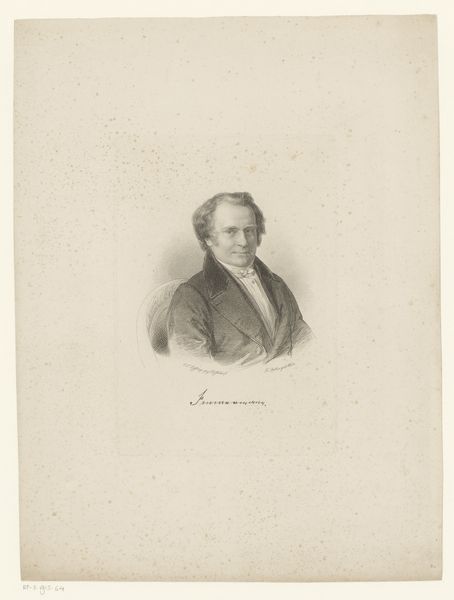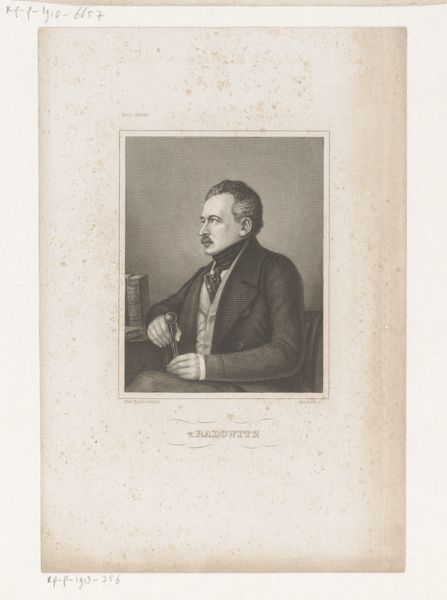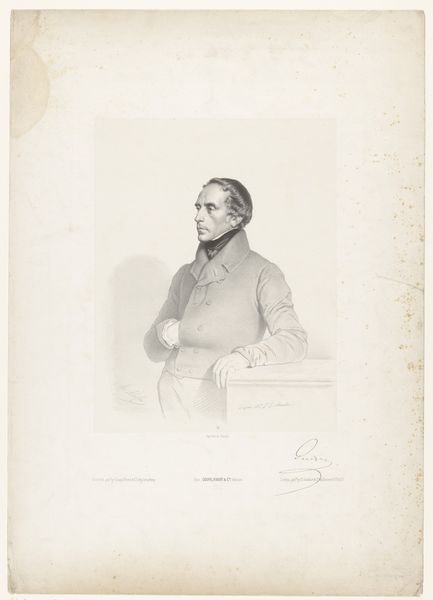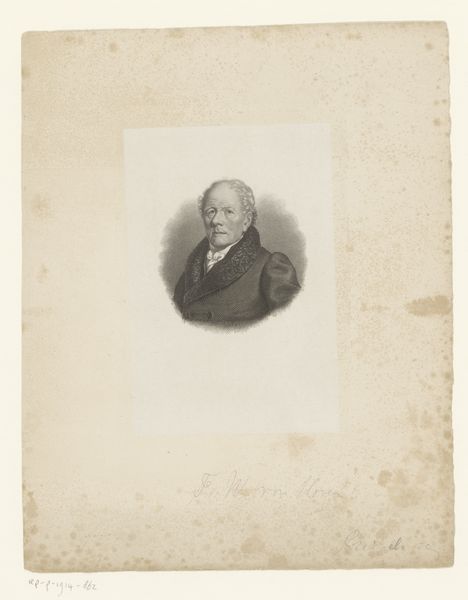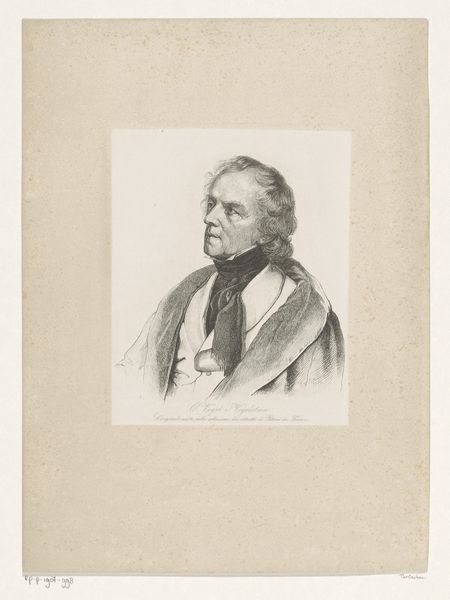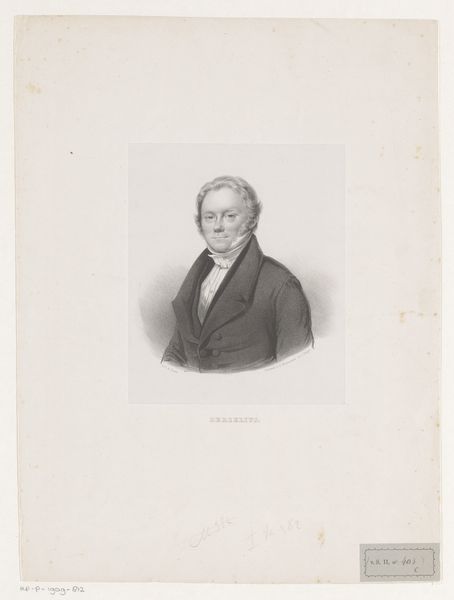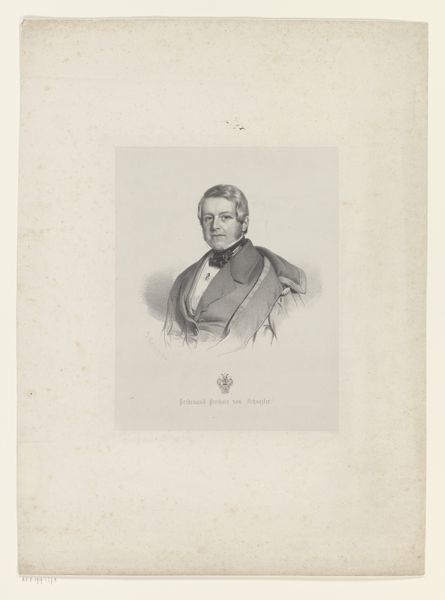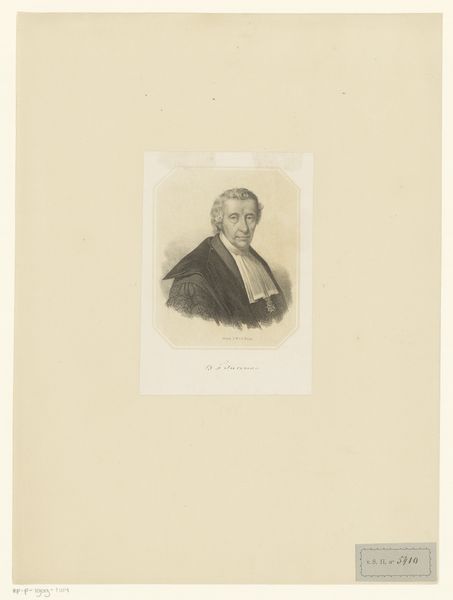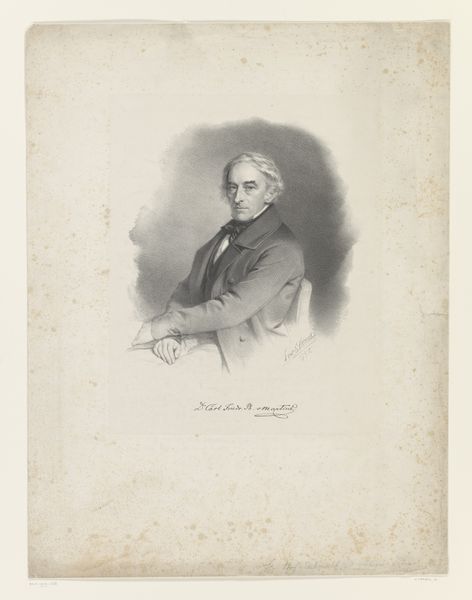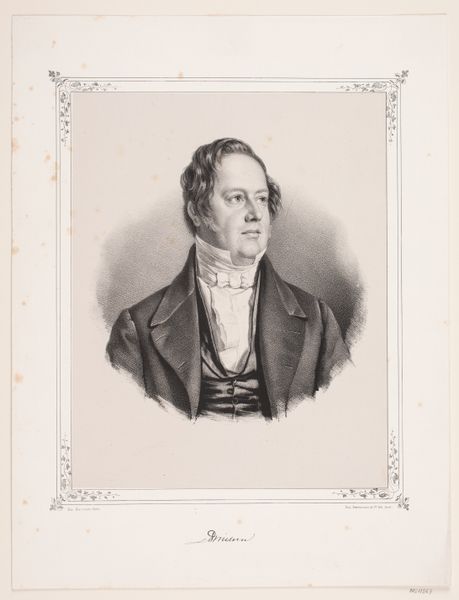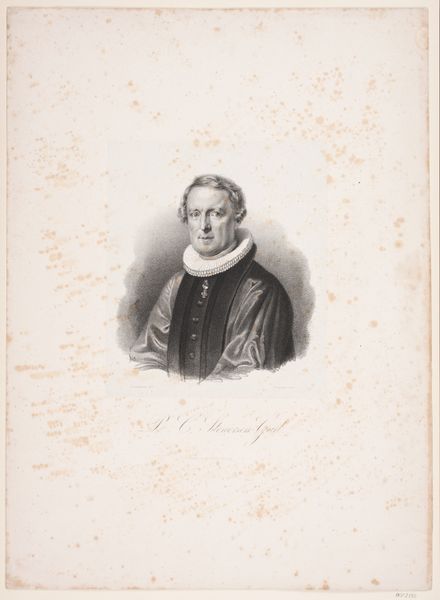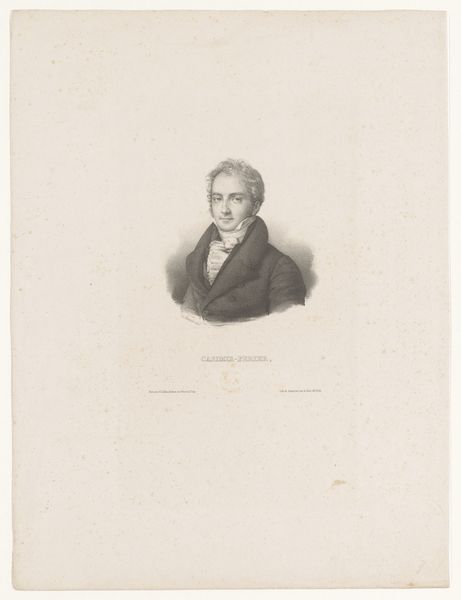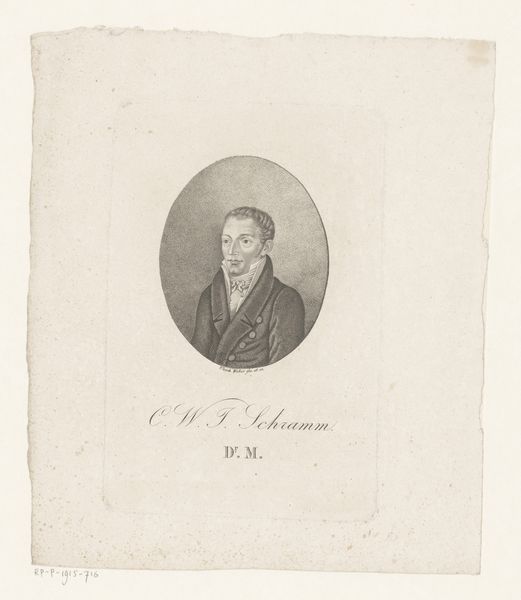
engraving
#
portrait
#
neoclacissism
#
old engraving style
#
history-painting
#
academic-art
#
engraving
#
realism
Dimensions: height 227 mm, width 173 mm
Copyright: Rijks Museum: Open Domain
Curator: This is an engraving dating back to 1835, titled "Portret van Gustav von Hugo." Editor: My first impression is a sense of restrained power. It's monochromatic, very controlled in its lines, and there's a certain formality to it, almost like a photograph capturing a moment of authority. Curator: That’s quite perceptive. As an engraving, we need to consider the labor-intensive process of its creation. The image would have been painstakingly etched into a metal plate, printed, and then disseminated, suggesting the desire for wider accessibility of this image of Gustav von Hugo. We can think about how portrait engravings functioned as forms of visual currency. Editor: Yes, and portraits like these are incredibly revealing when placed in their historical context. Looking at von Hugo’s dress and demeanor, and then considering who commissioned the portrait and its purpose would allow us insight into the social standing, self-fashioning, and possibly political message being conveyed here. Academic art aimed to teach moral lessons but also to present the sitter in an ideal way, thus the distribution strategy becomes more apparent. Curator: It's intriguing how the artist uses the starkness of the engraving medium to convey a sense of depth and texture in the clothing. The varying densities of lines create the illusion of folds, light, and shadow. Consider the materiality itself and the economic implications; engravings were reproducible, more accessible than paintings. Editor: Precisely. That accessibility shapes its reception. Because an engraving could reach a broader audience than a unique painted portrait, it underscores the importance of portraiture for social visibility and solidifying von Hugo's public presence, what impact did such imagery have during that specific time? And where was it viewed—publicly or in private residences? Curator: Right, it calls to question how we value the process of creating these works. Understanding the artist's technique as an engraver also deepens my appreciation for how prints allow for widespread dissemination of the person's likeness and consequently, his influence, but in that same vein we are still referring to a rather small selection of society to which it was presented to. Editor: It reminds me of how carefully curated historical images still affect us. Thanks to visual representations of powerful figures, their ideas have taken their toll to present day. I now think differently about historical power and representation thanks to our conversation. Curator: Exactly! This portrait demonstrates the intricate relationship between art, process, and social position. Understanding its construction and intent enriches my understanding and appreciation of visual history.
Comments
No comments
Be the first to comment and join the conversation on the ultimate creative platform.
